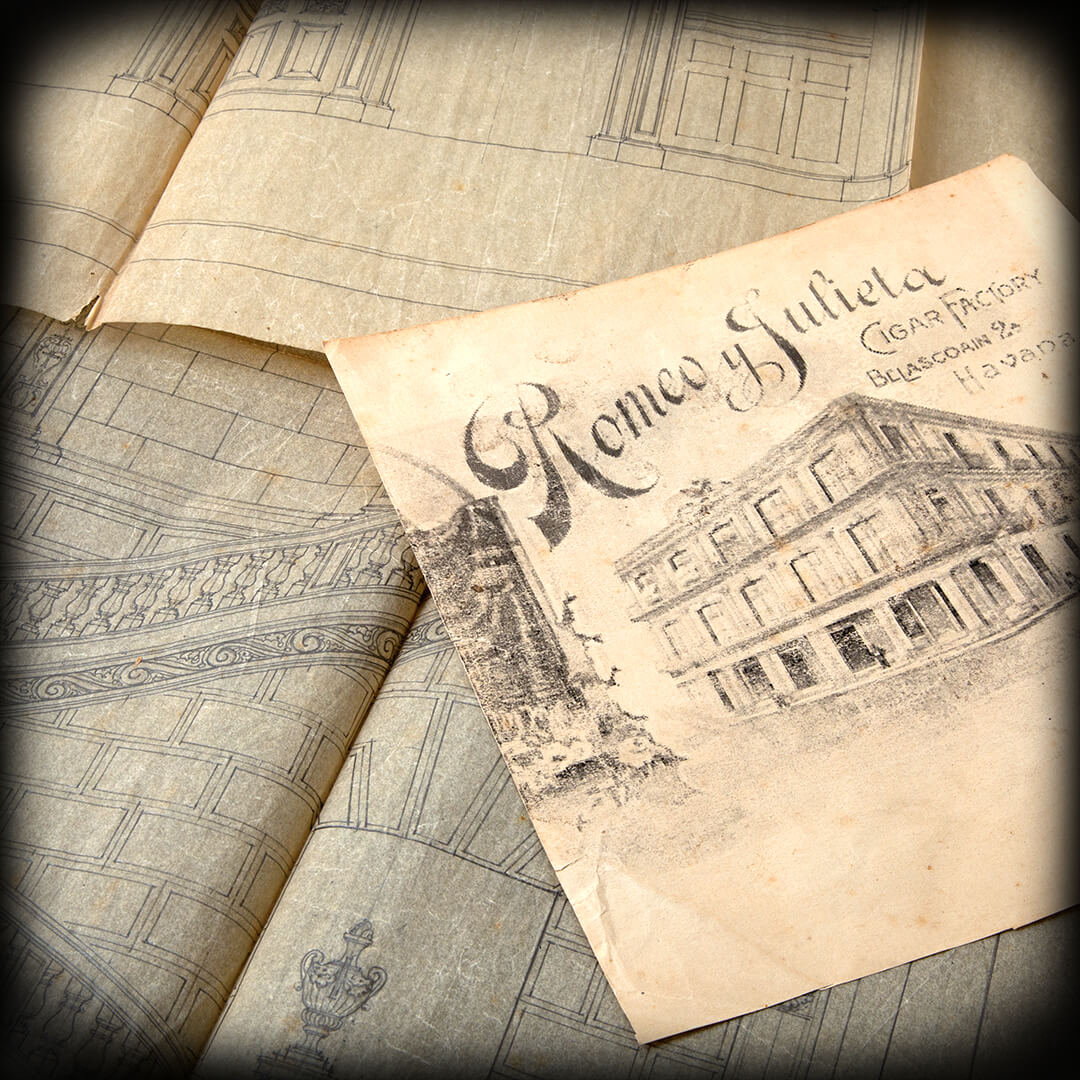Romeo y Julieta Cigar Factory
The history of the famous building located at No. 2A of Belascoaín Street in Havana.
A little over a year ago, in the Grauer Journal of January 2020, we told you the story of the famous cigar brand named after the tragedy of William Shakespeare's lovers: Romeo y Julieta.
Today we will focus on one of the buildings that housed the brand's production for almost 60 years, during the era of Don Pepín, who acquired the brand in 1903.
José Rodríguez Fernández, his real name, was generally described as the most intelligent and competent tobacco merchant of his time. At the end of the 19th century, at the age of 9, he arrived in Havana from Spain at the request of his uncle. His uncle welcomed him into his family and immediately sent him to one of the best schools in Havana. The young Don Pepín continued his education in the United States, where he studied for years, mastering the English language, always with commerce as his great vocation.
He then began his career in a small tobacco factory where he worked first in the plantation and then in cigar production, until he became the commercial director of the prestigious company Hija de Cabañas y Carbajal y Cía. However, the man always had one idea in mind: to own his own brand of tobacco.
In 1902, a few years after the Cuban War of Independence, Don Leopoldo González-Carvajal, then owner of the Hija de Cabañas y Carbajal y Cía factory, sold his factory to the American Tobacco Company. Don Pepín then resigned. Don Leopoldo then asked him to continue provisionally so that production would not be interrupted during the two years of handover. He accepted, but eventually left the company for good as soon as the new management took office. Legend has it that the new director, who was extremely satisfied with Don Pepín's work, even went so far as to give him a blank cheque in an attempt to keep him on. To which, rumour has it, he replied: "I have decided to leave for good, because I am determined to buy a tobacco factory and work for myself".
At the age of 37, José Rodríguez Fernández, seduced by the rarity of its production and its prestige, acquired the Romeo y Julieta factory, which was then located on O'Reilly Street, in La Habana Vieja, the most historic part of the city.
By combining his business sense with the application of innovative commercial and marketing methods, Don Pepín managed to become one of the most important manufacturers in the country. In 1904, when the factory in O'Reilly Street had become too small, he transferred production to a building located at No. 2A of Belascoaín Street in Havana.
After an extension of one floor, the new Romeo y Julieta factory, whose original blueprints can be seen in the photo, was officially inaugurated in 1905. The factory became one of the most modern and largest in Havana, occupying an area of 1,960 square meters. At that time, the company employed more than 1'000 people, including 750 torcedors.
By 1910, the factory was considered to be one of the most financially solid. Romeo y Julieta increased its production tenfold, from 2 to 20 million cigars per year. The fame and prestige of its cigars knew no bounds. It was known in Cuba and abroad. Amongst others, its popularity with one of the most famous statesmen in the world: Winston Churchill.
Throughout this period of prosperity, Don Pepín continued to travel to promote his cigars in the main markets of Europe, South America and especially the United States, managing to sell the entire production.
Unfortunately, in 1944 the man fell ill and took refuge in Paris with his family in a mansion in the luxurious Villa Montmorency, in the heart of the 16th arrondissement. During this period, he entrusted the management of the factory to his senior partner and vice-president, Ramón Argüelles Busto. Don Pepín drew his last breath in 1954 at the age of 88.
A few years later, the Cuban government nationalized the Romeo y Julieta factory through the state company Cubatabaco. The production was then transferred a few numbers further on to No. 852 in Belascoaín Street, an address where part of the production is still carried out today along with the H Upmann cigars. The rest of the production is carried out by the La Corona factory, which also houses the brands Cuaba, Hoyo de Monterrey, Punch, San Cristóbal de la Habana, Flor de Cano and Por Larrañaga.
Over the years, the historic factory deteriorated and was transformed into a residential building to house the modest local population. Subsequently, after several partial collapses and a large fire, it was demolished. Today, all that remains is its beautiful façade, a simple reminder of the time when this important Habano factory reached the height of its glory.
Today, the Romeo y Julieta brand is still one of the most popular Habano brands among aficionados around the world and one of the best-selling brands on the international scene.
To find out more about José Rodríguez Fernández "Don Pepín" and the Romeo y Julieta factory located at No. 2A, Belascoaín Street in Havana, we would be delighted to show you these original blueprints of the building, as well as photos from the period. You will also discover old printing plates, original vistas and old Romeo y Julieta cabinets.
(Pieces from our private collection)
For more information, contact us on +41 22 552 2799


